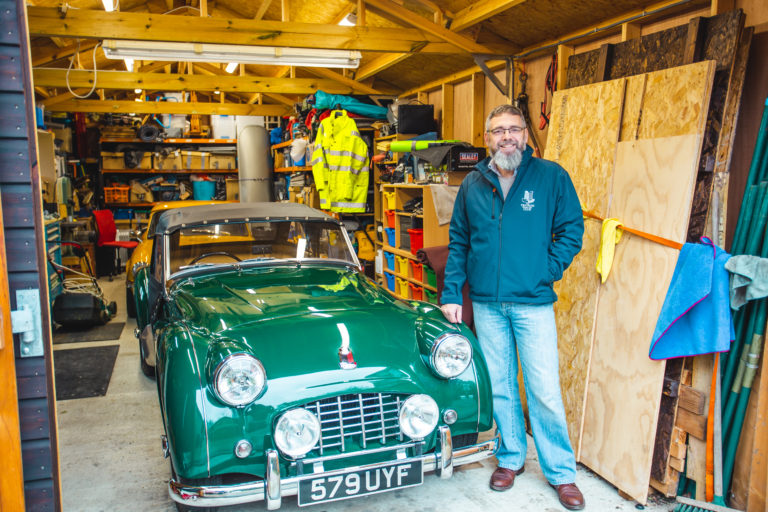
Competition winners
This week we announced the two lucky winners of our competition. Karl Reilly from Essex won the 1968 Triumph TR3 with his lucky ticket number


This week we announced the two lucky winners of our competition. Karl Reilly from Essex won the 1968 Triumph TR3 with his lucky ticket number
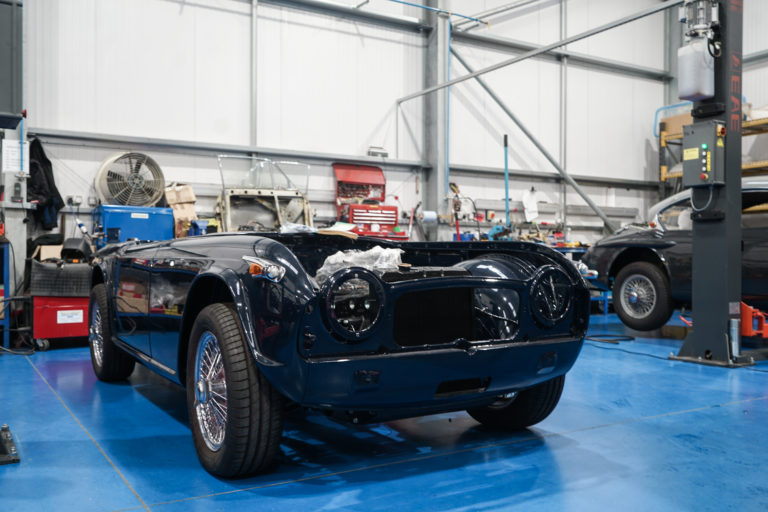
Although it has a long road ahead of it, we’re already pleased by the progress the TR5 is making. Our Triumph TR5 is set to
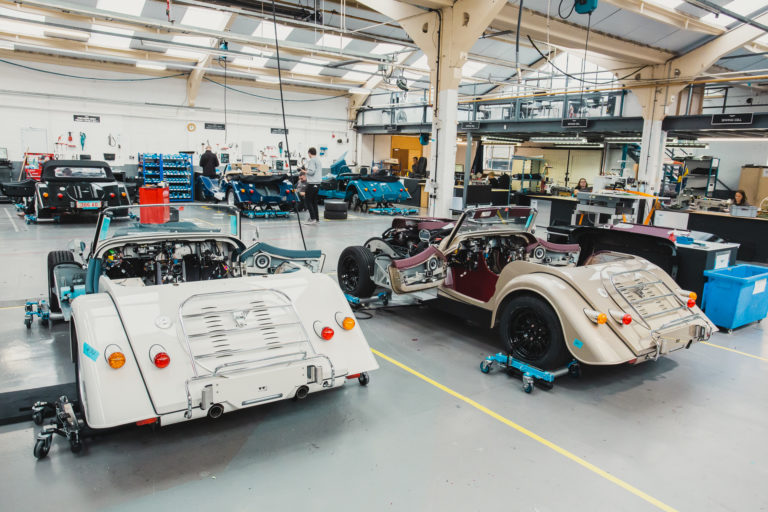
In our new feature, Thursday Time capsule, we look at classic cars celebrating significant birthdays in 2020. 2020 marks the 70th anniversary of the classic
This week we announced the two lucky winners of our competition.
Karl Reilly from Essex won the 1968 Triumph TR3 with his lucky ticket number 4174. Karl is a triumph lover, already owning a yellow Triumph GT6 so we know our TR3 will be in good company.
Today Karl drove a close relative to their wedding in his new Triumph and we can’t think of a better way to experience your first drive in a new car!
Our second winner was Lee Polley from Hull who won the beautiful 1991 Mini Rover with his lucky ticket 410.
We’ve been so overwhelmed with positive comments from other competition entrees and supporters congratulating the winners.
If you fancy your chances at winning a classic car, you can enter our current draws on our 1962 Triumph TR4 or a suave 1999 Mercedes 280SL.
Our Triumph TR5 is set to have the full works here at Bridge Classic Cars. As a long-standing restoration project, we have some big plans for this car.
So far in its journey, it has had all the bodywork done by our classic car technician Mauro, the electrics done by Adam, and the engine work carried out by our engine specialist Ady.
The body has been mounted to the chassis in what Mauro tells us was the most challenging part.
“You have to allow room between the chassis and the body to enable the perfect fit. It’s hard to get it all to line up perfectly.”
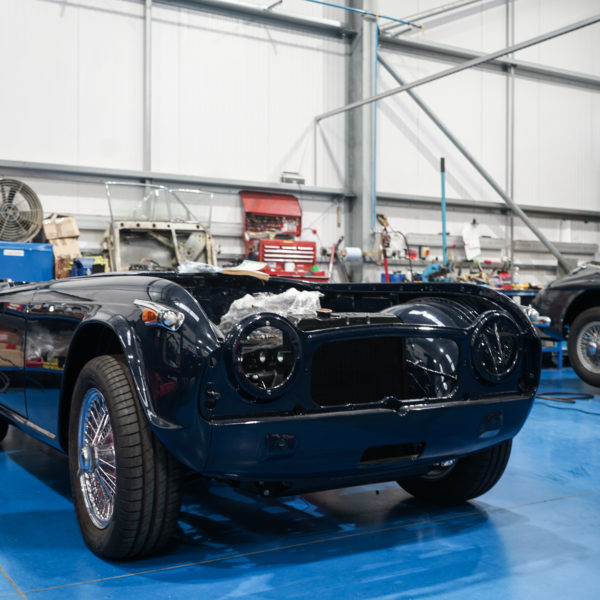
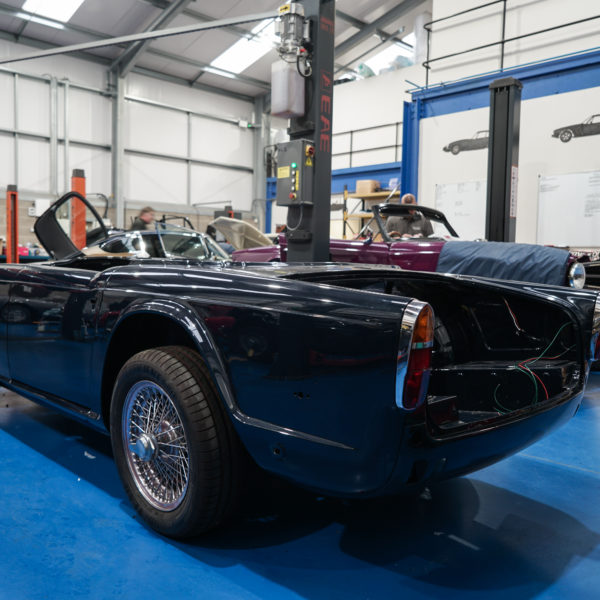
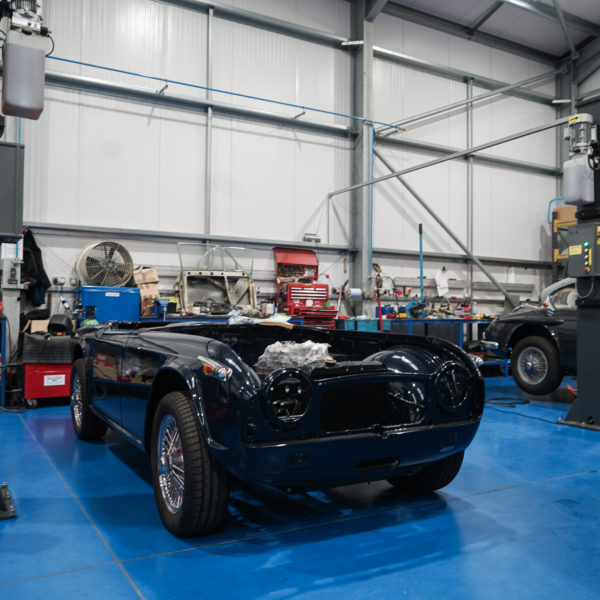
With the doors having been added to the body, the TR5 is starting to take shape. It’s a meticulous and time consuming process, but is a crucial stage in this car’s restoration.
Mauro has just finished up our Triumph TR6 restoration project, meaning he’s becoming quite the specialist in working with Triumphs.
Adam has recently installed the wiring loom as well which can be seen below.
The front side lights and back side lights have also recently been fitted and are ready to be accompanied by the headlights.
Within the body of the car, the hand brake cables, prop shaft, gearbox mounting, and fuel pump have all been fitted by classic car technician, Mauro.
Next on the agenda is to fit its headlights, engine, water pump, exhaust manifold, and fan among many other modifications.
2020 marks the 70th anniversary of the classic Morgan Plus 4, a classic that was developed and released in 1950. This highly sought after sports car graced the scene with its 2088cc standard Vanguard engine which was installed on a 4/4 chassis.
To mark its 70th anniversary, Morgan released 20 special edition Plus 4’s in March which sport a Platinum Metallic paint to promote the nuances in Morgan’s iconic visual design. What is particularly unique about this limited edition model is the gold chassis. It is the first time they’ve been developed in this colour, and will also be the last as they commemorate the end of their steel chassis production that has been going since the original Morgan 4/4 in 1936.
These rare models were handcrafted in Morgan’s workshop in Malvern, the UK, which we visited back in September.
Morgan Plus 4’s have been in and out of production since 1950 but were most recently revived after a break in 2005. The new production Plus 4’s feature a BMW powered engine instead of the popular Ford engine.
Although we haven’t had the pleasure of working on a Plus 4, we have had several 4/4’s in, which are the older model to the Plus 4. Morgan released their 4/4 as a groundbreaking vehicle in 1936 which premiered their steel chassis technology and have been in production, without breaks since.
The 4/4 is the worlds longest running production car, with the 4/4 standing for ‘4 cylinder, 4 wheel’ as it was the first of its kind in Morgan’s development as they moved away from the bike powered 3 wheels.
Although there’s little difference between the 4/4 and the Plus 4, the latter of the two was developed to be faster and more powerful, making it less mainstream and typically a touring option.
We use cookies to deliver the best possible experience whilst visiting our website. By clicking "Accept All", you consent to our use of cookies, or you can manage your preferences by clicking the link below. You can manage your preferences at any time from out Cookie Policy page.